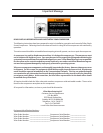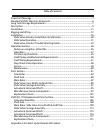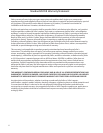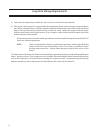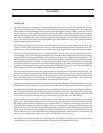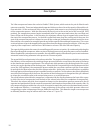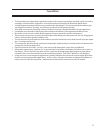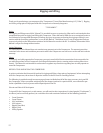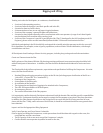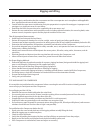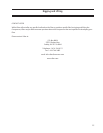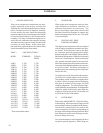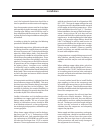
10
The Vilter compressors feature the exclusive Parallex™ Slide System, which consists of a pair of slides for each
gate rotor assembly. These two independently operated slides are referred to as the capacity slide and the vol-
ume ratio slide. On the suction end of the screw, the capacity slide moves to vary the timing of the beginning
of the compression process. With the slide moved all the way out to the suction end of the screw (the 100%
position), the compression process begins immediately after the gate rotor tooth enters the screw ute and
closes off the end of the groove. In this situation, the maximum volume of gas is trapped in the screw ute at
the start of the compression process. As the slide is pulled back away from the suction end of the screw, the
start of the compression process is delayed as some of the suction gas is allowed to spill back out of the screw
ute until the screw rotates far enough to pass the end of the capacity slide and begin compressing. This causes
a reduced volume of gas to be trapped in the screw ute when the compression process begins. In this way, the
capacity of the compressor is reduced from 100% down to as low as 10% of the full rated capacity.
The capacity slide provides the means for controlling specic process set points. By continuously adjusting the
ow of gas through the compressor, either suction or discharge pressure in a particular process can be controlled.
When coupled with a microprocessor controller, the adjustable capacity slide allows for precise and continuous
automatic control of any parameter in the process to a chosen set point.
The second slide for each gate rotor is the volume ratio slide. The purpose of the volume ratio slide is to maximize
the efciency of the compressor by matching the gas pressure within the screw ute at the point of discharge
to the downstream process requirements. The volume ratio slide operates at the discharge end of the screw,
and acts to vary the position of the discharge port. When the slide is extended fully to the discharge end of the
screw (the 100% position), the compression process within the screw ute continues until the screw rotates
far enough for the ute to pass the end of the volume ratio slide. At this point, the screw ute lines up with the
discharge port and the compressed gas is expelled from the screw ute. As the volume ratio slide is pulled back
away from the discharge end of the screw, the position of the discharge port is changed and the gas is allowed
to escape the screw ute earlier in the compression process, at a reduced pressure.
The overall volume ratio within the compressor is determined by the distance between the front of the capac-
ity slide (the start of compression) and the back of the volume ratio slide (the completion of compression).
Therefore, the volume ratio slide must respond to changes in the downstream pressure measured in the oil
separator and position itself for the required compression ratio based on the position of the capacity slide. By
only compressing the gas within the screw as far as required to match the pressure in the downstream receiver,
the compressor efciency is maximized. Proper positioning of the volume ratio slide prevents either over
compressing or under compressing of the gas within the screw ute. This allows the single screw compressor
to efciently handle a range of volume ratios from as low as 1.2 up to 7.0.
Description




